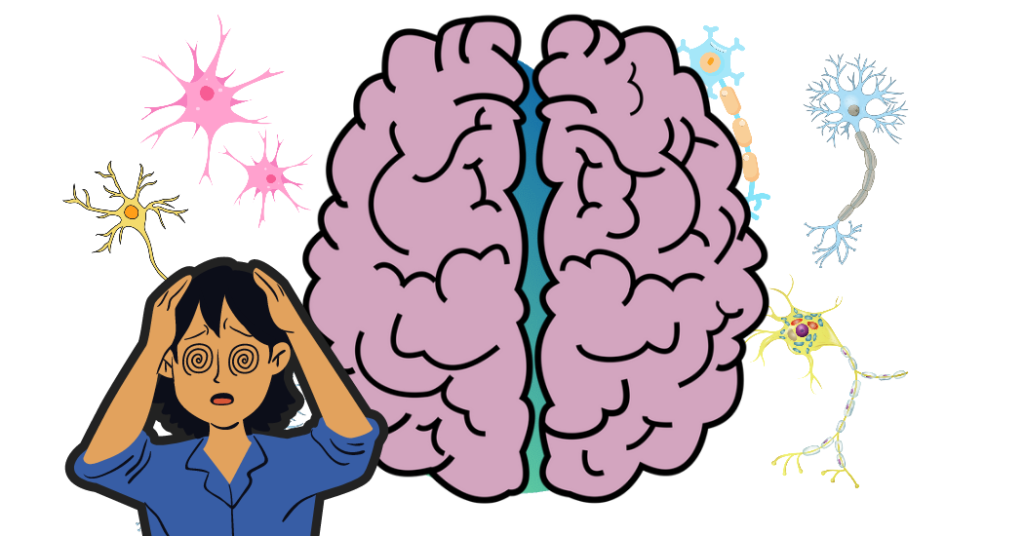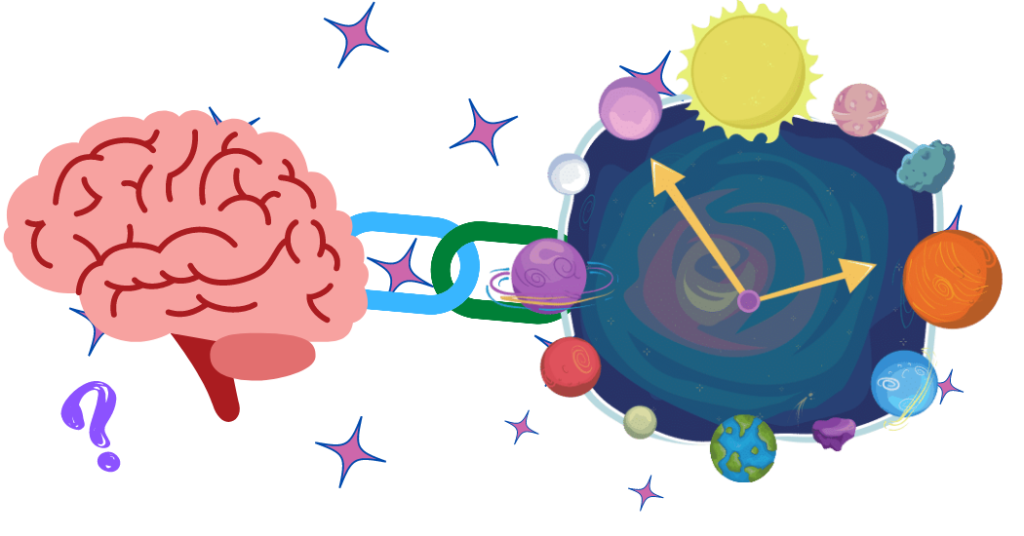Our brain and space-time have relation in the sense that both have alike systems.
The space we are accustomed to inhabiting is three-dimensional and it has length, width and depth. Moving through space means that an object changes its position with respect to an observer as the observer moves closer or away.
In contrast, we usually consider time as a one-dimensional construct, with only one direction that anything can travel: forward. That’s why Einstein called our perception of time “the biggest mystery” in his life.
Although the superb structure and exceptional functions of the brain are still mysterious to the much extent, this post will dig into the relation of our brain with space-time.
The complexity of human brain

Our brain is a complex system. It’s so complex that no observable signal can possibly describe it accurately enough to reproduce it as a computer simulation. And yet it works exactly like the most complex computer simulation ever constructed: our Universe.
Let’s start at the beginning: we are born when a new life form, us, appears out of the early Universe. And we possess consciousness as soon as we enter this 3D world filled with space and time.
We live life in our 3D Universe, filling space with us and time with the events of our lives. As we age, we lose some of the new brain cells that we never got a chance to use and eventually die when they are all gone.
Brain is made up of billions of neurons, and space-time consists of billions of galaxies.
But in reality, it’s not that simple. You grew up thinking that your brain is composed of billions of neurons, connected by synapses, firing electrical signals to transmit information one step at a time.
But this is not how it works. The nervous system is far more complicated than this process. It’s because every single cell in our body can communicate directly with every other cell via electric pulses traveling through its membrane potential (which is the output from all cellular membrane potentials).
So, if the brain is made up of billions of cells, how can each cell communicate with every other cell?
We know that our Universe is the “totality of space-time” that expands and contracts over the billions of years it takes for the Universe to form and evolve.
Related Post:
Yet, we are made up of time and space. There are billions of neurons in each of our brain cells. But it’s not possible for there to be billions of simultaneous brain cells communicating with each other via single neurons firing electric signals.
The answer is that our brain weaves all these different processes together. There are billions of neurons that can talk to other groups of neurons.
While at the same time, they are made up of many groups of neurons that talk to each other via single neurons firing electric signals.
Furthermore, every single neuron not only communicates with all the other neurons in our brain, it also communicates directly with all the other cells in our body.
In this way, our 3D Universe is woven together by threads made up of many thousands of messenger chemicals that communicate via brain signals. And we can see these networks “unraveling” as we age and destroy the messenger chemicals that were created in our 20s and 30s.
This same process also happens to all of us, as our brain cells are replaced throughout our lives by new cells that are built from new messenger chemicals.
Points to claim that our brain has a real relation with space-time

- Our brain and the space-time have relation in the sense that both have alike systems. The brain is a system where many groups communicate with one group. And similarly, the universe is made of atoms that communicate with one another. And they create the molecules that form us and our Universe.
- Our brain’s neurochemical communication system is exactly the same as the Universe’s neurochemical communication system. We can see it unraveling as we age, which is exactly similar to what happens to our Universe; specially when it expands and contracts over billions of years. In fact, a neuroscientist just recently proved that this process of breaking down neurons and rebuilding them over our lifespan is the basis for both time and space in our Universe. His name: Jack Cowan.
- Our brain works very much like a computer simulation. And we are made up of real space-time that connects our brains together.
- We can measure the complexity of our brain through the parallelism between its structure and the structure of our Universe.
- The structure of our Universe and the structure of our brain are all but exactly the same.
- Our brain’s neural connections are very similar to the connections between atoms in our Universe.
- Our brain’s communication system is very much like the connections between atoms in our Universe.
- Brain is made up of billions of neurons, and space-time consists of millions of galaxies.
Read: What if we discovered the algorithm of thought?
Bottom Line
It’s amazing to see the any relation between the space-time and our brain. And it’s also mysterious how our brain’s complexity reveals more about the nature of space-time itself. We long know that space-time has made everything in our Universe, atoms and molecules.
We have not yet realized that the same space-time has made us. But it’s organized in a very special way by our brain.
- AI-Powered PCs: Overhyped Trend or Emerging Reality? - August 21, 2024
- Princeton’s AI revolutionizes fusion reactor performance - August 7, 2024
- Large language models could revolutionize finance sector within two years - March 27, 2024



